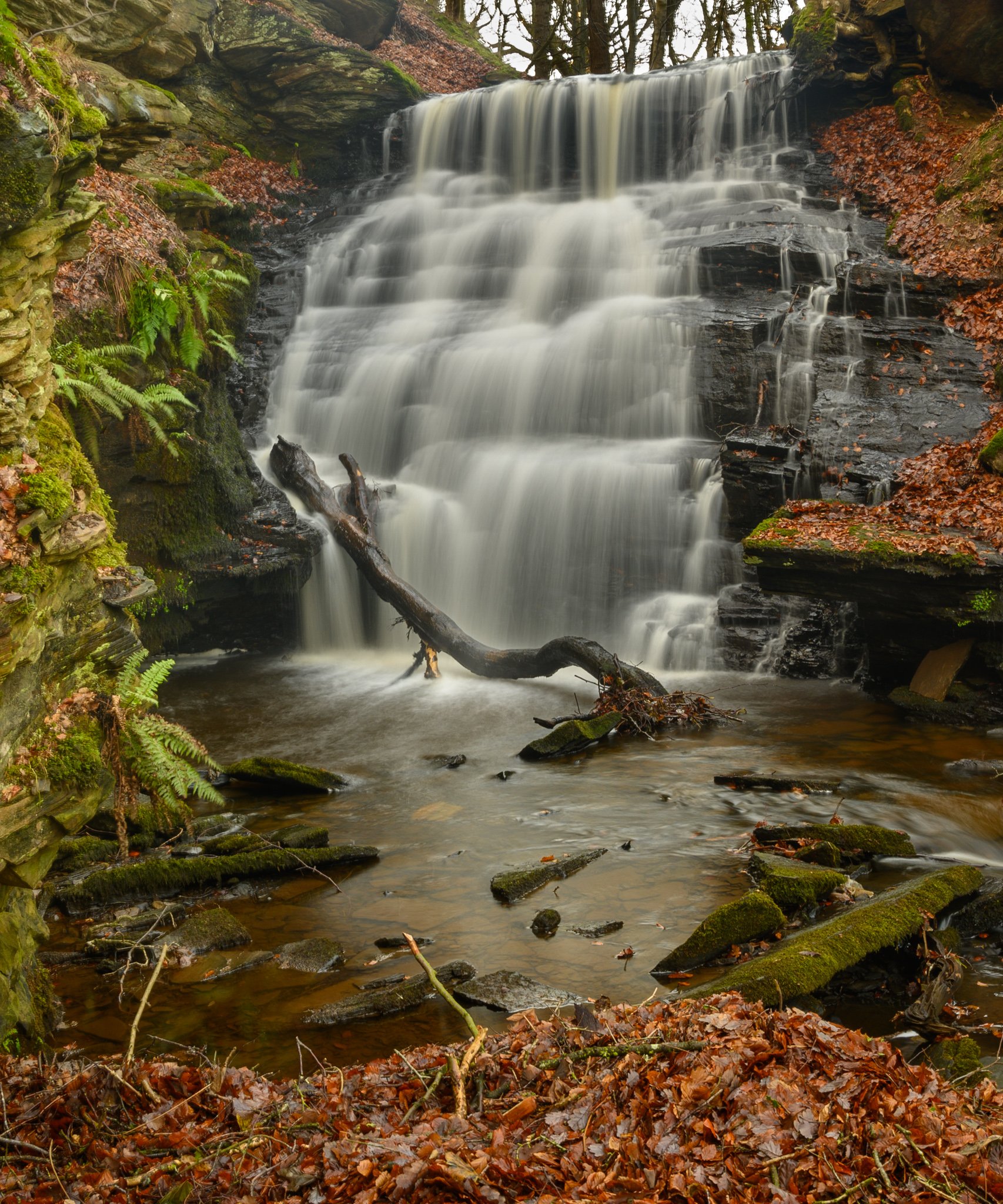How to Photograph Waterfalls tips and tricks
Summerhill Force a waterfall in County Durham
How to Photograph Waterfalls
Waterfall Photography Tips and Tricks
Waterfall Photography – an introduction
So, you’re here to learn how to photograph waterfalls, eh? Well let’s get into it. Waterfall photography is fun! But it can be devastating coming home and your image is pants.
I love waterfalls, there’s something hypnotic, relaxing and calming about the sounds of flowing water. In this post, I will explain some tips and tricks, some basic settings for waterfall photography/ Along with some basic composition tips to take the BEST waterfall photographs.
Low Force waterfall, County Durham
Waterfall Photography Gear
Firstly, you’ll need a camera. That's pretty much it for gear.
A lot of photographers will say you NEED a neutral density filter. You NEED a tripod. But I don’t go in for all that. You only NEED those extra pieces of kit if you want a certain look to those images.
“The look” I’m referring to, is that soft silky water smoothed out style you see in almost every waterfall photograph. Ever.
That being said. I do tend to take all the above with me on most of my Waterfall photography shoots. Here’s a short list of some of the kit I might have in my bag, for a shoot.
Cokin Z Filters
K&F Concept tripod
A polariser is the only filter effect that cannot be replicated in posy processing. If you only buy one filter, make it a circular polariser.
Waterfall Photography Settings
As I mentioned in the start of this article. There’s a type of look that a lot of people strive for with waterfall photography. The aim is to use slower shutter speeds to make the water smooth. I call this the white-water look. Because that’s exactly how the water looks. Whilst it’s the standard. It is by no means the rule. As I’ve said before, Photography is an art form. There is no right or wrong way to do things.
With all the images you will see in this article, I have captioned each with the settings I used. But like with all forms of photography, I and you should choose your settings based on the desired outcome.
As I mentioned in my previous How-to Article, how to photograph sunrises. I like to use bracketing in my waterfall photography. If you don’t know, bracketing is a technique of taking multiple exposure, and then combining them to create a final image. I tend to use a set aperture for all exposures, usually between f/8 and f/16. This lets me maintain a sharpness throughout the scene.
Again, the settings you choose for any scene, should be chosen to gain the desired result. If you want that smoothed out appearance, then a longer shutter speed is needed.
A towering waterfall such as high Force, can be captured with less than a 1 second exposure. Maybe even faster. The sheer volume of water that flow over that cliff is mind boggling. It doesn’t take much time for that water to smooth out. A smaller waterfall, such as Summerhill or Jerry force, requires longer to get that same affect. As there is much less water coming over the falls.
Take additional exposures to maintain foreground sharpness. With longer shutter speeds, trees and grasses can sway in the wind and ruin a perfectly good shot.
Watch the weather
How’s the weather? Has it been raining for the past few days? If you’re in the north of England, that answer is probably yes. I’m not the biggest fan of having lots of sky in my waterfall photography. Sometimes it’s unavoidable, but whenever possible. I aim to cut out all the sky. But don’t worry. You can always clone out the sky if it’s dull or overexposed.
Cloudy overcast days are fantastic for waterfall photography. Even better if there’s been a downpour of rain in the last few days. Lots of rain means swollen rivers. Swollen rivers mean big epic waterfalls!
Hot to photograph waterfalls tip & tricks conclusion
As with all photography, waterfall photography takes time and practice. While writing this article I’ve looked back at lots of my old images. The waterfall shots I was creating in 2016 for example, were awful compared to what I produce latel
Finally, I should add this. When shooting at a waterfall, please keep your own and the safety of others at the forefront of everything you do. Waterfalls can be extremely dangerous places. If you aren’t careful, you may lose your camera or worse, hurt yourself or those around you.



